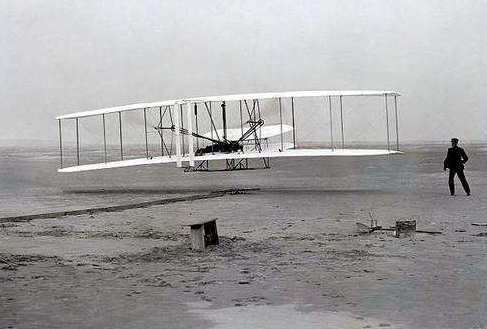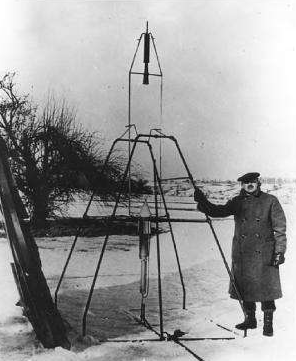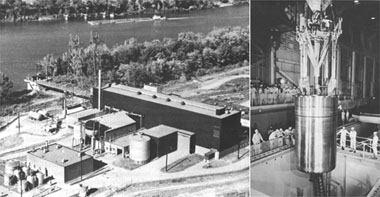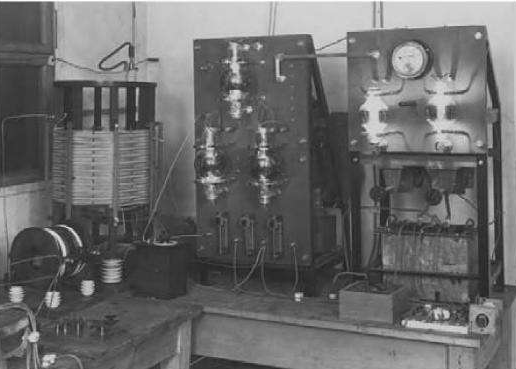The twentieth century was a period of extensive inventive activities, with great minds coming up with new solutions to existing problems, and improving on innovations and developments of the nineteenth century. Some of these innovations resulted in mild enhancements to day-to-day operations, such as the pop-up toaster invented by Charles Strite, while other inventions played a significant role in the evolution of modern society, such as the development of highways to accommodate the rapid growth of automobile owners. (Zimmermann 1999) This was a remarkable period in human history, marked by scientific discoveries and technological advances that continue to-date. There were numerous great inventions in the twentieth century, and the following are some of the most important ones, in terms of their massive impact o humanity.
Airplane
The impact of the invention of air planes in the 20th century can be compared to that of locomotives in the 19th century, in that it made it much safer and faster to move to distant places than it was in the past. The Wright brothers, Orville and Wilbur, were the first to invent and develop airplanes through experimentation in the beginning of the 20th century.
In the period between 1900 and 1902, the Wright brothers discovered the importance of wing aspect ratio on aerodynamic performance, and, therefore, dedicated their time to experimenting on different wing design subjected to a wind tunnel, or lift measuring machine. A major advancement in flying occurred in 1902, when the Wright brothers produced a new design with a double vertical tail at the rear of the machine to counteract the disturbing yawning motion created by variations in drug produced at the wings, which they had noticed a year earlier on their glider. The first successful attempt at flying a heavier than air object was achieved in 1903, when the motor powered flyer with a steering wheel and pilot was maneuvered through air over a short distance in North Carolina.

Other inventors advanced the work of the Wright brothers to enhance air travel in the decades that followed, mostly to meet the demands of the First World War. Rapid improvements were made in wing design, materials and engines, but it was not until the discovery of the turbojet engine in the 1930s by Frank Whittle and Hans von Ohain that jet transport became a possibility, transforming national defense and warfare in WWII and later years (Anderson 2003, p.127). From the 1950s, most Americans changed their choice of transportation from rail to air.
Modern Rockets
The rocket was a Chinese discovery made more than 3,000 years and used by Greeks and Romans for amusement and as a terror weapon for primeval armies. However, it was not until the twentieth century that rockets became bigger, more powerful and controllable, increasing their value in war, and more importantly, creating a means of exploring outer space. The development of rockets that could eventually take man to the moon was a collaborative effort of multiple great minds in the twentieth century, though the pioneering work of Robert Goddard was instrumental in the process.
Goddard made a variety of major inventions that were critical to the development of the modern rocket including the use of: vanes in the jet stream for rocket steering; gyroscopes for guidance; valves in the propellant lines to stop and start the engine; turbo-pumps to direct the propellant to the combustion chamber; and liquid oxygen to cool the exhaust nozzle (Turner 2010, p.3). In 1926, he successfully launched a 5 kg rocket from Auburn, Massachusetts that was powered by petrol and liquid nitrogen.

The liquid-fuelled rocket reached a height of 12.5 meters. A few decades later, in 1957, Sputnik finally managed to breach the atmosphere. This had a great impact on the world in terms of renewing scientific interests in exploring Earth and increasing access to knowledge for the development of essential products. Rockets are used to place satellites outside Earth’s atmosphere, making it possible to predict the weather, use GPS for navigation, monitor the environment, and communicate on a global scale using video, voice and data, among others.
The advent of space exploration increased the demand for higher performance and computing power, as well as physiological monitoring systems, which accelerated the development of advanced medical systems, powerful computers, specialty materials, and another 50,000 plus, space related products that have made life easier for human beings (Turner 2010, p.4).
Nuclear power
The discovery of nuclear power in the twentieth century can be compared to the discovery of steam power in the nineteenth, but much more powerful and dangerous. Following harnessing of the atom in the 1940s, humanity gained access to an efficient, unlimited and non-pollutant source of power. The new means of power generation significantly enhanced “medical diagnostic techniques and transformed military strategies and arsenals” (Char & Csik 1987, 24).
However, the destructive ability and threat to human existence posed by nuclear energy, through the creation of vicious weapons, prevented the world from going to a third World War. Furthermore, nuclear plants posed a great danger when left in the hands of incompetent people, creating the capacity to render extensive regions radioactive and uninhabitable for generations, as was seen in the 1986 Chernobyl disaster.

The safe operation of nuclear power plants has the ability to provide an outstanding and cost-efficient source of energy, meeting the electrical needs of over one billion people. There are currently 434 reactors in the developed nations including Sweden, the UK, Russia, France, Canada, and the US, where nuclear power contributes to 20% of the country’s energy needs. While nuclear technologies spark a lot of controversy, nuclear energy has had a massive impact in the twentieth century, not only in the provision of power, but also medical applications, as in the use of radioisotopes for internal imaging of patients (Char & Csik 1987, 24).
Transistors and integrated circuits
The invention of the transistor in 1947 by William Shockley, John Bardeen and Walter Brattain served as an ideal replacement of the bulky vacuum tube, facilitating the drastic reduction in size of electronic devices like computers, televisions and radios, where it was used to regulate electric current. It was a transitional device between vacuum tubes and microprocessors, which made it possible to manufacture smaller, more powerful, and more efficient electronic innovations and products in the 20th century (Levinshteĭn 1996, p.226).
The impact of the transistor was most apparent in mid twentieth century, when the transistorized radio became the fastest selling retail product of all time. The evolution in the ability of computers to compute numerous calculations per second has been drastic, from 50 multiplications per second using the first high speed commercial computer, made in 1955, which weighed 3 tons, required 50Kw of power, and cost $200,000, to 250 multiplications per second in 1977, using a one-pound handheld calculator that used 0.5 watts of power and cost $300 (Levinshteĭn 1996, p.234).
Owing to the discovery integrated circuits, current palm-sized devices are much cheaper, and are capable of transmitting data, storing large amounts of data, scheduling appointments, and preparing lists, among other tasks for about $250. Integrated circuits also created a path for numerous innovations that have considerably enhanced safety, convenience, and the quality of modern life, including satellite broadcasts and wireless communications (Levinshteĭn 1996, p.227).
Computers
The ENIAC, which was invented by John Mauchly and Presper Eckert, was an awkwardly massive and cumbersome device for crunching numbers that evolved into a facile and portable communication device within a few decades. Computers have become essential tools for both individuals and businesses, including manufacturing, education, medicine, research, entertainment, and even governments.
The fast technological advancements can be attributed to “developments in stored data, the urgency to produce superior materials that would make computer operations faster and more reliable, and engineers who had a large vision of computers beyond performing calculations” (Invention of the PC 1996). The evolution of computers also facilitated the innovation of related products like programming languages, applications, and networking. Further developments in graphical software have provided a user friendly interface, which has not only made it easy for people to use computers, but also facilitated the exploration of new worlds via the internet (Invention of the PC 1996).
The internet
“The idea of the internet was conceived due to the need to share resources and exchange information between the government and university research centers” (Abbate 2000, p.5). The development process, which took place in the 1960s, encountered numerous engineering challenges, including the “design of a packet switching network—a system that could make computers communicate with each other without the need for a traditional central system” (Abbate 2000, p.5). Other challenges included the design of data exchange protocols, machines, and application. Eventually, this endeavor led to the establishment of a low-cost technology that is available to ordinary people in their homes, learning institutions and offices, and is not managed or owned by any nation or corporation (Abbate 2000, p. 44).
Unlike the airplane that drastically reduced distance barriers and made it possible for people to travel at the speed of sound, the internet made it possible to travel at the speed of light. Through the internet, people can spread lies about a person or product; reveal the truth about a particular matter; and start a revolution, all in instant. The internet also allows people to trade, find and interact with old friends, watch videos produced in different parts of the world, gain access to music and live shows, and even find a spouse, for just a small fee, and in some cases, free of charge. In addition, the internet has made it incredibly easy for people to get useful information from more than 1 billion web pages (Abbate 2000, p.153).
Radio
The radio was invented following the continued development of the telegraph and sound machines. While the role of the radio has been reduced to serving as a channel to rile the masses, it was an extremely useful electronic device that delivered news, broadcast sports events and provided other forms of audio entertainment. After the demonstration of the ‘wireless’ telegraph by Marconi in 1901, advancements in technology moves much faster, with the innovation of vital components that would eventually make broadcasts messages to people thousands of miles away without using a wire, like the “diodes, tuning circuits, antenna, microphones, capacitors, loudspeakers, and oscillators” (Bray 2002, p.85).

There are currently many technological devices today that may make the advent of the radio seem less important than it was in the twentieth century. The radio was as important as a computer, television or mobile phone, and was particularly valued during the Second World War, and into the despondency of the fifties, when the excitement around it was gradually replaced by discovery of the television. Nevertheless, the introduction of the radio was a significant agent of social change in the twentieth century that allowed people to gain access to remote sections of the world, and industries to promote their products through commercials (Bray 2002, p.84).
Television
The invention of the television brought a new kind of excitement as people were now able to watch live performances. In the 1920s, John Logie Baird invented the first television, which was partially mechanical, and was later developed to work electronically by Vladimir Zworykin and Philo Farnsworth in 1927. While there is a lot of debate about the negative effects of watching too much TV, like the destruction of brain cells and emotional and psychological damage, the television continues to be appreciated as a source of information, education and entertainment. Most people would not know what to do with their time if there was no television. In fact, people are so addicted to the TV that they no longer eat at the dining table, but in the living room watching their television sets (Abramson 2007, p.7).
Air conditioning and Refrigeration
The twentieth century marked the introduction of efficient, controllable, and mobile air conditioning and refrigeration systems. The creation of air conditioners and refrigerators was a progressive task, starting with the William Carrier’s initial work with humidity control and cooling in 1902, followed by developments in “cooling agents, materials, system designs, and energy efficiency” (Constable & Somerville 2003, p.116). Electric powered motors were available in the 1920s, to allow the use of mechanical refrigerators instead of natural and manufactured ice for climate control. At this time, refrigerators cost $600, but the price reduced to $300 by 1930, and $150 by 1938, when the first air conditioner was fitted inside a vehicle (Constable & Somerville 2003, p.116).
The reliability and affordability of climate control has transformed the air conditioning process of many households, and facilitated international trade of fresh produce and horticultural products, in addition to providing a purified environment in manufacturing, surgery, and big kitchens. By the end of the twentieth century, about 70 percent of US households had air conditioning, and 99 percent had at least one refrigerator (Constable & Somerville 2003, p. 121).
Antibiotics
Before this discovery of Penicillin by Alexander Fleming, in 1928, people encountered many unknown fatalities, particularly due to bacterial infection. The first compounds to be used for infection control were arsenicals like Salarsan, which were discovered by Paul Ehrlich (Coates 2012, p.15). Their success led to the development of sulpha drugs fifteen years later, leading to the development of the current antibiotics. These discoveries were essential in the treatment for small pox, typhoid, syphilis, and gonorrhea, and later modifications of these scaffolds to enhance pharmacological properties of antibiotics made them better, and reduced human resistance from repetitive use (Coates 2012, p. 14).
Reference List
Abbate, J 2000, Inventing the Internet, Cambridge, Massachusetts, The MIT Press.
Abramson, A 2007, The History of Television, 1942 to 2000, Jefferson, North Carolina, McFarland.
Anderson, J. D 2003, The Airplane, a History of Its Technology, San Diego, California, American Institute of Aeronautics & Ast.
Bray, J 2002, Innovation and the Communications Revolution, London, The Institution of Engineering and Technology.
Char, N & Csik, B 1987, Nuclear power development, History and outlook Events have changed the global prospects for nuclear power, IAEA Bulletin, vol. 29, no. 3, pp. 19-25.
Coates, A R 2012, Antibiotic Resistance, New York, Springer.
Constable, G & Somerville, B 2003, A Century of Innovation, The Engineering That Transformed Our Lives, Washington, DC, Joseph Henry Press.
Invention of the PC 1996, Web.
Levinshteĭn, M E 1996, Transistors: From Crystals to Integrated Circuits, Hackensack, NJ, World Scientific Pub Co Inc.
Turner, M J 2010, Rocket and Spacecraft Propulsion: Principles, Practice and New Developments, New York, Springer.
Zimmermann, D 1999, List of the Most Important Inventions of the 20th Century, Web.